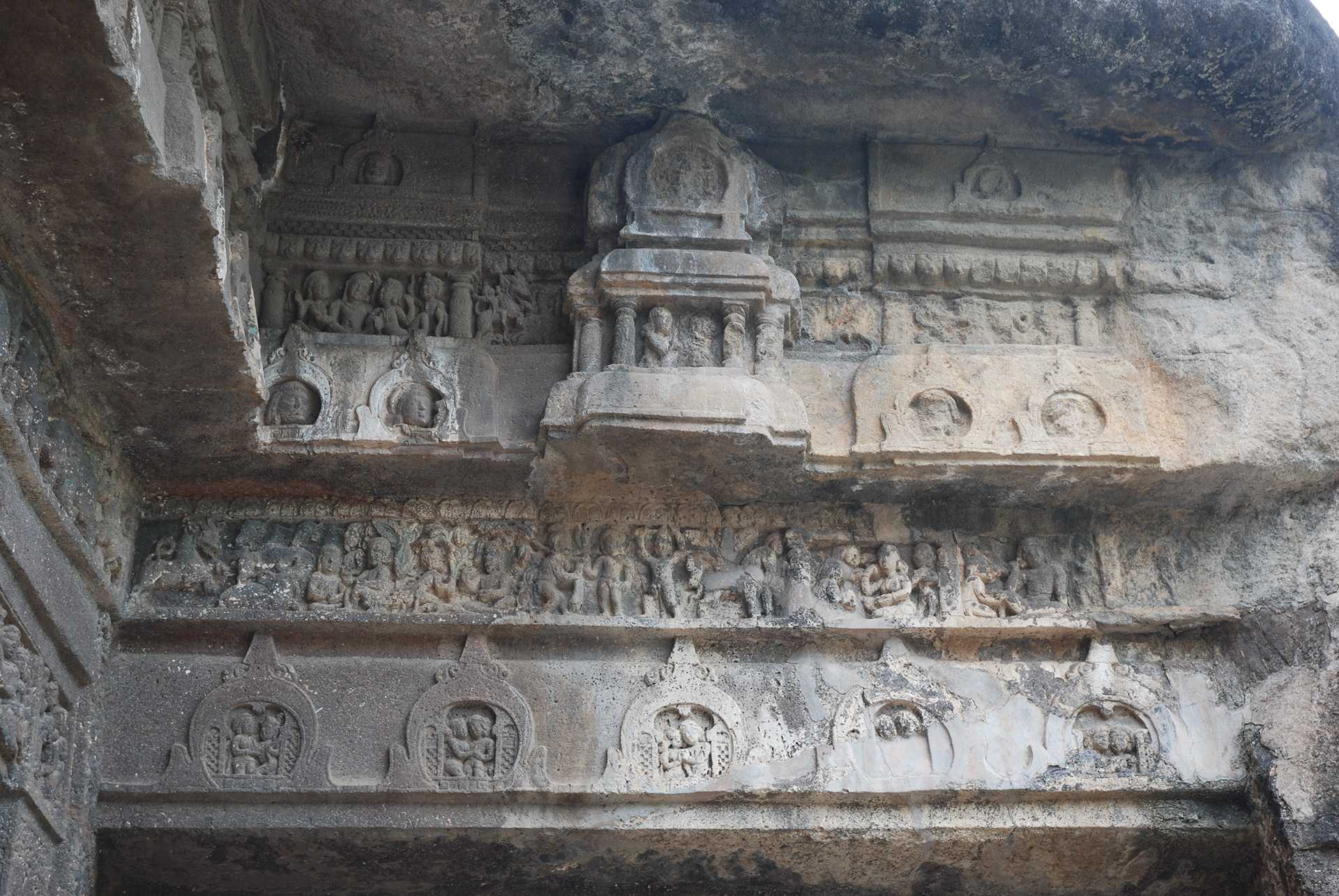Frontcourt
Ajanta Cave 1 has two ‘wings’ or ‘annexe’. They are located on either side of the frontcourt. The wings have raised plinth three to four steps high. There is a pillared chamber or vestibule, which opens into an inner cell. The front part of these wings, above the pillars, have tall entablatures, which have been richly carved with many courses of friezes. There are relief sculptures of various kinds depicting various motifs. Many of the themes are simply decoative themese with various repetitive motifs, vegetative, ornamental, stupa motif, loving couples, elephants, lions, etc. But, the central frieze depict narrative sculptures. This is the only cave temple at Ajanta whose exterior have narrative sculptures.
The left entablature depicts the narrative of Siddharth witnessing the four omens: an old man, a sick man, a dead man, and an ascetic.
The right entablature depicts the narrative of Siddharth leaving the palace. It is called ‘Maha-abhiniskramana’ or the ‘Great Renunciation’.
Siddharth Witnessing the Four Omens

Did you know?
Among the vast expanse of ancient Buddhist temples in India, Ajanta Cave 1 stands out with its exquisite narrative sculptures. These intricate carvings not only depict tales from the Buddha’s life but also offer a rare glimpse into the artistic mastery of ancient times.
